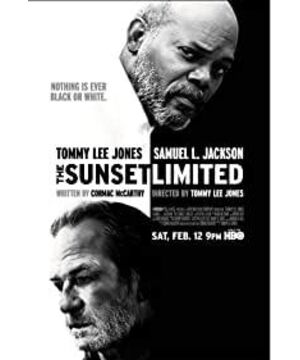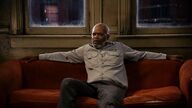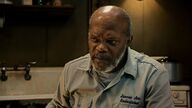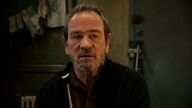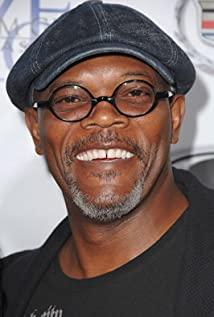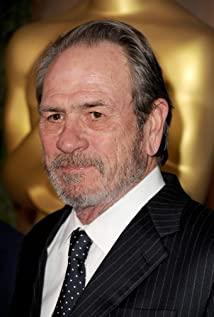The Sunset Limited, directed by Tommy Lee Jones in 2011, adopts mono setting (a ghetto) and involves two characters, Black (B) and White (W).
Internal context - 1. Cinematography 2. Verbalization 3. Auditory , in Scene 4 - the dining scene , followed by 4. “discourse plex” that screenwriter intends to connect with viewers who construe symbolic meanings externally in the whole film . Additionally, it is assumed that particular meanings are expected to be interpreted as ways characters verbalize reflects their ways of thinking.
Proposal: Audience identification is not always the same, and that is the most interesting part between the art of language and potentiality of human's thoughts.
Visually, cinematography helps portray images of both characters as how it is shot demonstrates ways to put the emphasis on their inner-world projection. B mobiles in the living room with sole exception of having dinner in Scene 4, while W always takes a seat instead . B has disparate postures and enlarges his gestures with hands, striking W's attention desperately. W is neither forced to sit nor is asked to keep sitting down, but he chooses to sit instead. It mirrors W's choice because mobility symbolises as subjectivity and freedom. Besides, the camera adopts low-angle-point-of-(W's)view shots to film B either with arms akimbo or sharp eyes. They guide viewers to consider B as powerful, along with divinity, due to the use of back light lighting and just like grilling W whenever B talks about Jesus.Close-up shots present W's facial expressions crystal clearly, such as frowning and being impatient or doubted. Externally, metaphoric cinematic screen attempts to shape B as attentive with confidence in his persuasive saying while W is projected as rather self-centred and passive. Moreover , designed visual messages do not always contribute to absolute understandings as they are varied in accordance with personal experiences of viewers in reality. Oppositely, the more B's eagerness to persuade, the higher fragility of B can be deduced. He probably will break if W still heads to the jaws of death ultimately. W is well-educated and he deeply understands that conversation between an ex-convict and professor is unequal in terms of power relation. W is not attentive visually. It is not because of lacking confidence,but contrarily being too confident in shielding and defending himself. It is interesting to note that exact projection of characters may still lead to varied understandings of viewers. Audience identification still depends on how potential interpretation of viewers goes.
Verbally and aurally, apart from the dialogue, ways characters communicate are vast concerns. Gaps and speech speed can be observed. Before the dine, there is almost no discernible gap whenever W takes his verbal turn after B's saying. On the contrary, there are many gaps when B says after W's turn, portraying B that he needs rooms for thinking and suggesting his doubts. Another significance in their conversation is that W speaks swifter than B while B delivers in a slower way, projecting W as clear-minded and logical while B as patient. Word stress and intonation are other concerns too. Words like Jesus, primacy, first and intellect are stressed usually since they are the prime ideas thoroughly spread. Intonation also alters into rising and falling tone. Rising intonation is employed when characters question each other.Falling intonation is utilized when they reply or elaborate their views. More importantly, they imply attitudes of characters, such as being questionable towards each other. Furthermore, non-diegetic sound is applied as well, for instance, Asks W about whether he has ever thought about Jesus, then off-screen car horn sound pops up, illustrating viewers to imagine surroundings of the ghetto and symbolizing the conflict that W and B are having, in terms of being an atheist and believing in God. Fascinatingly, not only do visual elements sculpt this cinematic art work, but verbal and auditory related elements also get piled up and dedicate to the representation of general picture externally. These elements aurally reinforce diverse perceptual ideas that have already hatched in viewers' personal visualization.It is not just about what is said by characters, but how the provided imaginal space, designed by screenwriter, provokes and ponders viewers on (re)thinking without being spoon-fed.
Thoughtfully, as an audience, all elements dedicate to effects of the whole film externally in actual world. Motif - The Sunset Limited, is foregrounded. A train metaphorically symbolises as heading to destination is related to recurring theme that propagates throughout the whole film, in terms of the choice a person makes towards mortality. Mortality is a cultural gambit among people who uphold disparate religious views or none and quality for human to be human is to live and seek the truth notwithstanding the truth people wish to know is a myth. W , a professor that is speculated as an antagonist, is in the pursuance of meaning towards life. Serendipitously, the more he contemplates, the less he lives. Nihilism and meaninglessness give him a blow as he reveals that faith is just a delusion, so he chose death. That is the power of knowledge. B,an ex-convict that is construed as a protagonist, believes in God. Verbally and mindfully, he attempts to persuade W not to suicide, which is a good intention, though B makes it in the wrong way. That is the power of language. Binary opposition setting is in a stark contrast, which structurally urges viewers to take a stance since it incites contemplation of culture, humanity and philosophy correlated in everyday lives.
Elements do not necessarily constitute and mould. Like the aforementioned, it depends on potentiality of human's thoughts. Language is powerful as it provokes, and that is the art of language. A dialogue can be syntactically completed. However, human's thoughts are always on the permanent stage of becoming.
29-11-2018
View more about The Sunset Limited reviews


